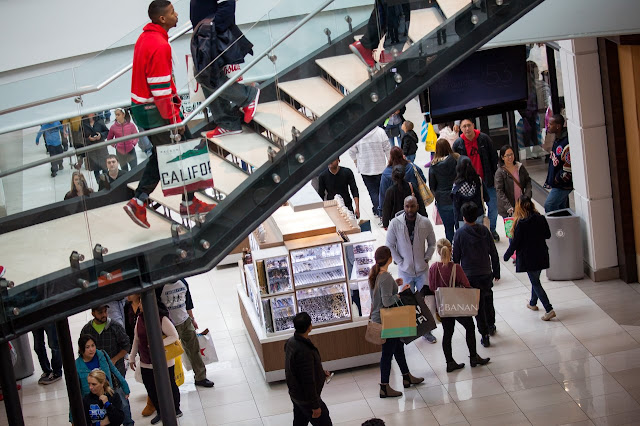BANKS SEND WARNING SIGNS FOR ECONOMY / THE WALL STREET JOURNAL
Banks Send Warning Signs for Economy
Data out of the banking sector is consistent with an aging economic expansión
By Aaron Back
.
Shoppers at an Edison, N.J., mall last November. Photo: Michael Nagle/Bloomberg News
U.S. banks are sending signals that the country’s economic expansion is getting long in the tooth.
Being a key transmission mechanism for savings, investment and spending, the banking sector is worth watching as a barometer for the health of the overall economy. Lately it has been acting as one would expect toward the end of an expansion phase.
Most glaringly, after strong lending growth for several years, momentum clearly is slowing. In its quarterly report on the sector, the Federal Deposit Insurance Corp. found that total loans and leases by banks and other insured institutions rose by just 3.7% from a year earlier at the end of June. That is the third consecutive quarterly deceleration and is down from a 6.7% pace of growth a year ago.
DOWNSHIFT
Net Loans And Leases by FDIC-insured institutions,
change from a year earlier
In a statement, FDIC Chairman Martin Gruenberg explicitly linked the slowdown to the fact that the economy is now in its ninth year of expansion. But it is more than just a symptom. Slower lending growth means less fuel for business investment and personal consumption, potentially weighing on economic performance.
After a period of strong lending, it is also typical for defaults to start ticking up as levels of indebtedness rise and bills come due. This is indeed happening, at least among consumers. Credit-card charge-offs soared by 24.5% in the second quarter, according to the FDIC, marking the seventh straight increase. Charge-offs on loans to commercial and industrial borrowers, however, declined by 9.7%, possibly due to a recovering energy sector.
Despite these headwinds, banks are doing well for themselves. The nearly 5,800 banks and savings institutions that the FDIC monitors reported $48.3 billion of combined net profits in the second quarter, up 10.7% from a year earlier. This was mostly due to higher interest rates.
Banks have been quick to raise rates on loans but slow to do so on deposits, widening their lending margins.
While good for the banks, rising interest rates are also a symptom of a late-phase expansion, and a potential trigger for an economic slowdown.
These signs of advanced age in the credit cycle don’t mean a recession is imminent, but they do mean it is time to be on the lookout for other signals of an economic downturn. Expansions don’t die of old age, as they say. They also can’t live forever.


0 comments:
Publicar un comentario